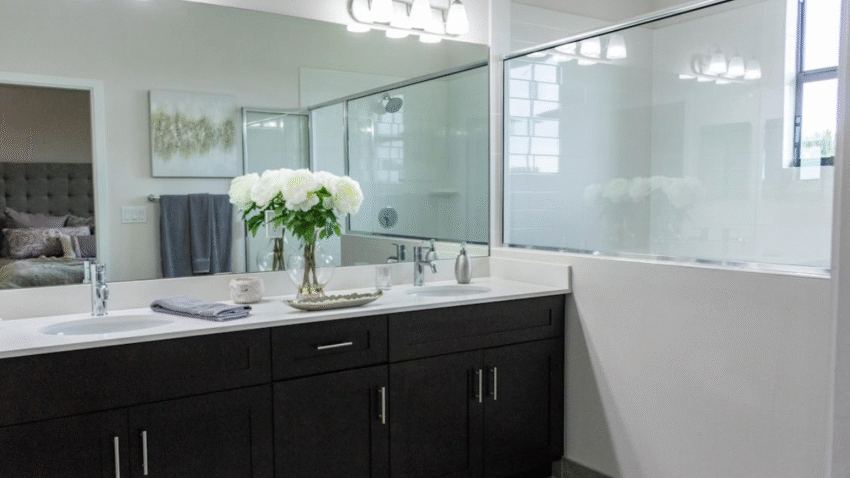Introduction
Is your toilet constantly running even when no one has flushed it? That annoying trickling sound could be costing you hundreds of gallons of water per day. This guide on how to stop a running toilet will help you diagnose the issue and fix it fast—saving you water, money, and frustration.
A running toilet is one of the most common household plumbing issues, but fortunately, it’s also one of the easiest to fix with just a few tools and a little know-how.
Why Stopping a Running Toilet Matters
A running toilet may seem like a minor inconvenience, but it’s a major water waster. In fact, a single running toilet can waste up to 200 gallons of water per day, driving up your utility bill and placing unnecessary stress on your plumbing system.
Left unchecked, it can also cause:
- Continuous moisture buildup in the bowl and tank
- Mold or mildew inside the tank
- Annoying noise that disturbs your peace and quiet
Fixing a running toilet improves water efficiency, prevents long-term damage, and restores normal function to your bathroom’s most essential fixture.
Step-by-Step Guide to Stop a Running Toilet
Step 1: Remove the Tank Lid
Carefully lift the toilet tank lid and set it aside on a towel to avoid scratching. This will expose the flushing components: the fill valve, flush valve, flapper, float, and overflow tube.
💡 Flush once while watching to see which part isn’t working properly.
Step 2: Check the Flapper
The most common cause of a running toilet is a worn-out or misaligned flapper. The flapper is the rubber or silicone seal that lifts when you flush and seals the flush valve afterward.
- Reach in and press the flapper down. If the running stops, it means the flapper isn’t sealing properly.
- Inspect it for warping, mineral buildup, or deterioration.
Fix:
- If it’s dirty, clean it with a sponge and vinegar.
- If it’s damaged, replace it. Shut off the water supply, drain the tank, unclip the flapper, and install a new one (available at any hardware store).
Step 3: Adjust the Chain
The chain connects the toilet handle to the flapper. If it’s too long or too short, it can cause the flapper to stay partially open.
Fix:
- Make sure the chain has about ½ inch of slack.
- Adjust the length by moving the hook or clip to a different link.
- Avoid letting it get stuck under the flapper, as this can also prevent proper sealing.
Step 4: Inspect the Float
The float controls the water level in the tank. If it’s set too high, water will keep flowing into the overflow tube.
Fix:
- For ball floats (attached to an arm): Gently bend the float arm downward.
- For cup-style floats (on vertical rods): Use the adjustment screw to lower the float height.
Aim for the water level to sit about 1 inch below the top of the overflow tube.
Step 5: Examine the Fill Valve
If the float adjustment doesn’t stop the running, the fill valve may be faulty or clogged. The fill valve controls how much water refills the tank after flushing.
Fix:
- Turn off the water supply.
- Remove the fill valve cap and flush out debris.
- If the valve still doesn’t shut off properly, replace it with a universal fill valve kit (easy to install with basic tools).
Step 6: Check the Overflow Tube
The overflow tube prevents the tank from overflowing. If water is constantly trickling into it, your float is set too high or the fill valve is malfunctioning.
Fix:
- Lower the water level (see Step 4).
- Ensure the tube is not cracked or damaged. If it is, consider replacing the flush valve assembly.
Common Mistakes to Avoid
Mistake 1: Ignoring the Problem
A running toilet wastes water continuously and can add hundreds to your annual water bill.
Solution: Always investigate and fix the issue as soon as you hear the sound.
Mistake 2: Replacing Parts Without Diagnosing
Swapping out random parts wastes time and money.
Solution: Observe how the internal parts behave during a flush to identify the real problem.
Mistake 3: Setting the Float Too High
Setting the float too high causes water to overflow and triggers continuous refilling.
Solution: Keep the water level about an inch below the overflow tube top.
Mistake 4: Leaving Chain Too Tight or Too Loose
Improper chain length prevents the flapper from sealing.
Solution: Leave a little slack, but not enough for it to get caught.
Mistake 5: Not Shutting Off the Water During Repairs
Working with the water on can cause splashes or unintended flushing.
Solution: Always turn off the water supply before replacing any parts.
Extra Tips & Bathroom Hacks
- Use food coloring to detect leaks: Add a few drops into the tank. If color appears in the bowl without flushing, your flapper is leaking.
- Keep a toilet repair kit handy: These usually include a flapper, fill valve, and all necessary hardware—ideal for quick DIY fixes.
- Prevent mineral buildup: Clean the inside of the tank every few months with vinegar to dissolve hard water deposits.
🛠️ Need more bathroom maintenance tips? Check out our guide on how to replace a toilet flapper for a detailed breakdown.
Conclusion
A running toilet may be annoying, but it’s rarely serious—and almost always fixable in under an hour. Whether it’s the flapper, chain, float, or fill valve, identifying the source and applying the right fix can restore silence and save you money.
💧 Don’t ignore that trickling sound—grab this guide, open the tank, and stop the waste.
Bookmark it so you’re always ready for quick and easy toilet fixes.
